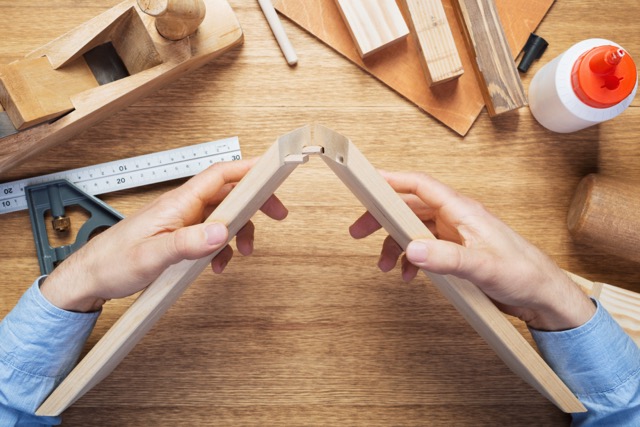Finding the Right Wood Glue
When taking on woodworking projects anywhere in Australia, choosing the right wood glue is absolutely essential for creating strong, long-lasting bonds. With so many types of wood glue available, it can be tricky to determine which adhesive is best suited for your specific application and wood type.
In this guide for Australian woodworkers, we'll explore the most common options for wood glue and discuss the factors to consider when selecting a suitable formulation. Read on to learn wood glue tips and best practices for your next DIY woodworking project.

TYPES OF WOOD GLUE AND THEIR CHARACTERISTICS
Understanding the properties of different wood glues is vital in choosing the optimal adhesive for your project requirements. Here are some top options:
-
PVA Wood Glue (white glue)
PVA or polyvinyl acetate glue is a popular, multi-purpose adhesive. It offers versatility, affordability and reliable bonding power. PVA is water-based and cleans up easily with water. It works well for indoor applications and most general woodworking tasks like laminating, assembly and edge banding. -
Aliphatic Resin (yellow glue)
Another emulsion ideal for wood-to-wood indoor applications, AR glue, has similar usage properties to PVA in the general viscosity, drying time and cleanup. However, it forms a stronger bond that also sets up harder than PVA so that it can be readily planed, scraped or sanded once dry. It is often the first choice of many professional woodworkers due to its balance between ease of use, strength, and cost. Titebond Original is an excellent example of AR Glue. It is often referred to as "yellow glue," but this can be misleading as other glue types can also be yellow! -
Epoxy Wood Glue
Known for its incredible bonding strength, epoxy glue is resistant to water, heat and chemicals. It requires precise mixing but creates superior, long-lasting bonds even on complex materials like metal and glass. Epoxy is ideal for heavy-duty outdoor projects. -
Polyurethane Wood Glue
With excellent waterproofing abilities, polyurethane glue is perfect for outdoor furniture and wood projects. As it cures, it expands to fill gaps and voids. Clamping is required during drying. -
Hide Glue
A traditional collagen-based glue used for centuries, hide glue allows adjustments but eventually creates a strong bond. It's often used in antique restoration. Modern hide glues are more convenient to use. -
Cyanoacrylate Wood Glue
This fast-drying "super glue" provides quick bonds for small woodworking projects and delicate materials. It has limitations compared to other wood glues but is easy to apply.

TIPS FOR CHOOSING THE RIGHT WOOD GLUE
When selecting wood glue for your next carpentry project, here are some essential factors to consider:
-
Wood Type
Softwoods like pine may need a penetrative PVA glue, while dense hardwoods can handle stronger epoxy. Always check wood grain compatibility. -
Environmental Factors
A waterproof polyurethane glue is ideal if the finished item will live outdoors. Indoor projects have more flexibility. -
Drying Time
Faster drying glues allow you to complete projects quickly, while slower options provide more assembly time. -
Bond Strength
A delicate jewellery box needs only cyanoacrylate, while a sturdy dining table requires extra-strong epoxy for durability. -
Experience Level
Beginners may want to start with easy-to-use PVA before attempting trickier epoxy mixing.

PRO TIPS FOR BETTER WOOD GLUE APPLICATION
Once you've selected the best wood glue for your DIY or woodworking project, follow these tips for success:
- Carefully read and follow all manufacturer's instructions for best results.
- Only apply glue to clean, dry surfaces for optimal adhesion. Wipe away any dust or residue.
- Use enough glue to thoroughly coat joining areas but avoid excessive "squeeze out".
- Align pieces cleanly and clamp tightly, providing even pressure as the glue dries.
- Allow adequate drying time for the adhesive to fully cure and attain maximum strength.
- Remove any dried excess glue carefully with a chisel, scraper or sandpaper.
Following the manufacturer's directions and woodworking best practices will result in incredibly strong, long-lasting wood bonds that hold up to the test of time.
